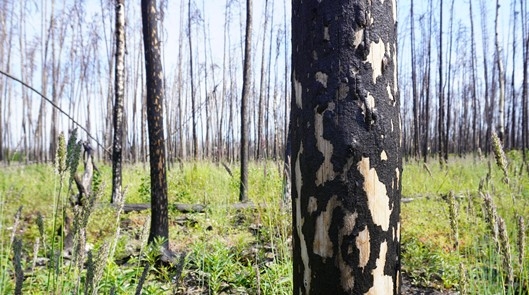
The intensity, size, and frequency of wildfires impacting forests and communities across Canada have grown as a result of climate change and a century of fire suppression. These extreme fires have catastrophic and lasting impacts to Indigenous communities and their lands, affecting livelihoods, food security, and cultural and spiritual practices.
Over the next three years we are working alongside the Fort Smith Métis Council, Lakeland Métis Nation Association, Foothills Ojibway First Nation, Yaq̓it ʔa·knuqⱡi‘it (Tobacco Plains) First Nation, and Biodiversity Pathways to co-develop knowledge on the impacts of wildfire and fire mitigation practices. The recently announced three-year, $4.5 million agreement with Natural Resources Canada under the Wildfire Resilient Futures Initiative will enable us to collect foundational knowledge that can support future fire mitigation and forest restoration in four “demonstration sites” in western Canada.
The demonstration sites span large areas in the southern Northwest Territories along the Slave River; the foothills of Alberta; the northeastern boreal forest of Alberta; and the Galton mountain range in southeastern British Columbia. These sites are in two different stages of readiness with respect to extreme fire risk mitigation: three have been at least partially affected by extreme wildfire, while one has not yet been affected but is at high risk due to a century of fire exclusion.
At the three sites affected by extreme wildfire, the project partners will bring together Indigenous knowledge and western science to:
- Measure impacts to wildlife, plants, and forests in recent extreme fire landscapes,
- Describe the impact of fires on Indigenous use of traditional lands,
- Describe Indigenous fire practices to enhance post-fire landscapes and mitigate the risk of future fires,
- Recommend post-fire practices that lead to positive outcomes for Indigenous Peoples while mitigating against future extreme fire

